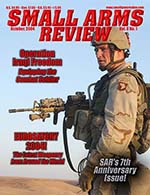By Dan Shea
“The past is a foreign country: they do things differently there.”
-’The Go-Between’ L. P. Hartley 1953
I remember when my children asked me what videos I watched when I was growing up. Trying to explain the large wooden box in the living room with the small black and white screen on it with only three channels available, and live shows such as Jackie Gleason and that “Really big shew” was a difficult concept for them to understand. Saturday mornings there were hordes of men at the local hardware store, testing obscure tubes for the televisions they were proud of being able to repair along with their Briggs & Stratton lawn mower engines. Later my children asked what computer games I played while growing up - and they couldn’t fathom when I said “None.” Computers were the realm of scientists with white side-wall haircuts, pocket protectors, miniature slide rules, and thick black framed glasses focusing their eyes on the Future of Mankind as huge budgets were spent on single computer machines that filled large buildings.
Talking about machine gun values or the Class 3 world seems almost the same. The Class 3 dealers I knew back then had traveled cross country in trucks or vans, going from gun shop to gun shop, trading machine guns as they did the deals and each filing a Form 2 showing the change of ownership. They didn’t have to wait for ATTU to do a transfer like we new dealers did with the BATF, they simply did the deal and left with their new guns. In the Class 3 community I grew up in, you could buy a MAC-10 for $45 and try to sell it for $65, but it was a tough sell because of that $200 transfer tax. A new in box Colt M16A1 was a prohibitive $365, and Colt would shut off a dealer who sold one to an individual. Thompsons were $200, MG42s were $300 plus, but most were mix-n-match guns because prior to 1968, receivers weren’t machine guns and you could go to Alexandria, Virginia, and buy every part for an MG42 or MG34 out of a bin and put your own guns together then register them. (I hope that explains most of the mismatched MG34s and MG42s, they came out of France as boxes of parts). When I started buying these guns, that is what the older Class 3s explained had happened.
By 1984-85, those new fangled foreign machine guns had a few semi- automatic counterparts being imported into the US of A, and the guy who had a semi AK47 was unusual, where the heck would he get that weird Soviet thirty caliber ammunition? This spawned the .223 caliber AK variants that were imported. No one knew then how cheap and readily available 7.62x39 ammunition would become. When Class 3s first started getting MP5s, they were registered receiver, clip on lower guns; $325 for the HK94, and $125 for the conversion work then a $200 transfer tax made these some of the most expensive machine guns aside from the classics. When the three major Class 2 manufacturers who were making them at the time started with the MP5SD models, very few people were willing to pay the additional transfer tax for that $100 suppressor, thus the single tax MP5SD with a suppressor tube welded to the receiver was born. Integrally suppressed submachine gun was the new term.
In 1988, we went from 4,500 Class 3 dealers paying $200 per year in Special Occupational Tax, to $500 per year, and the number of dealers dropped to just over 2,000. We thought it was the end of the business. That year at Knob Creek, Kenny added on to his old range building, and what is now the Knob Creek Range Gun Store was opened up so that the dealers could leave the ten GP Medium military tents we had been out in the mud in, and be in a nice dry building. Only thing was, that first year the tables didn’t show up until Friday, and during our setup, we lost all day Thursday for selling. We were all somewhat frustrated, and Kent Lomont was so mad he was skidding 08/15 Maxims across that new concrete floor. The hapless Maxims showered sparks over my pile of gun cases that people were clawing over to open and see what goodies were inside. To this day, when someone offers me a $7,000 08/15 Maxim, I check all sides to see if there is any “Concrete wear by Kent” on it.
Why am I rambling about all of this? Simply to pass on some perspective. Machine guns and Title II firearms were the crazy old uncle of the gun world, not the high ticket, high profile items they are today. Enthusiasts were a relatively small group of eccentrics. Today, we have huge websites covering every aspect of the community, numerous shoots around the country, and Small Arms Review magazine with our own gun show in Phoenix every December. Many of the enthusiasts have crossed over into the firearms and military industry, it has always been like that, of course, but no one ever acknowledged it. Gene Stoner did his initial work in his garage, John Garand did so after hours, and many of today’s modern weapons are the product of small Class 2 shops in the US. We have come a long way.
The past is a foreign country; and not always a better one except perhaps in memory.
-Dan
This article first appeared in Small Arms Review V8N1 (October 2004) |
| SUBSCRIBER COMMENT AREA |
Comments have not been generated for this article.



